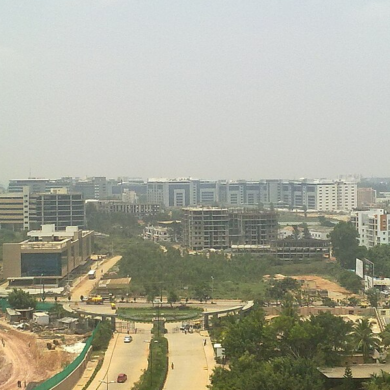How to Calculate Long-term Capital Gains Tax on Sale of Property 2025
April 25th, 2025

Understanding long-term capital gains tax is essential for property sellers in India. From updated tax rates in 2025 to exemptions under Sections 54, 54EC, and 54F, informed planning can reduce liability and optimise returns from your real estate investments.
Selling a property in India can yield significant returns, but it also triggers tax liabilities – particularly LTCG tax on property if the asset is held for over 24 months. In 2025, LTCG property sale tax in India 2025 have evolved, offering new options that impact how sellers report and manage their gains.
From choosing between 12.5% flat tax without indexation to 20% rate with inflation adjustment, it is now more important than ever to understand your choices. Additionally, Sections 54, 54EC, and 54F provide various exemptions when proceeds are reinvested strategically. Whether you are planning to purchase another property or invest in tax-saving bonds, a clear understanding of these provisions can protect your returns.
With advance tax obligations and strict penalties for non-compliance, proactive reporting and accurate documentation are key. This blog simplifies the process of LTCG tax on property and explains capital gains tax calculation, equipping buyers and sellers with actionable insights to plan better and take well-informed real estate decisions.
Table of Contents
What is Long-Term Capital Gains Tax?
LTCG tax on property in Indian real estate is levied on gains from selling property held for more than 24 months. If you sell a residential or commercial property after this period, it is considered long-term capital gain, on which 20% tax is levied along with indexation benefits.
The purchase price is adjusted based on inflation, through indexation – effectively reducing the taxable gain. You can claim exemptions under sections like 54 or 54EC, by reinvesting the proceeds in another residential property or specific government bonds within the stipulated time.
As per capital gains tax calculation, LTCG is applicable after deducting indexed acquisition and improvement costs, along with any expenses related to the sale. It is important for real estate investors and property owners to plan these transactions wisely, as proper tax planning can preserve more of the earned capital and ensure legal compliance with Indian tax regulations.
Why is it Important for Property Sellers in 2025?
LTCG and property sale tax in India 2025 hold significant importance for buyers and sellers, due to recent tax reforms. For properties held over 24 months, sellers now have the option to pay either 12.5% tax without indexation or 20% with indexation, depending on the acquisition date. Thanks to this flexibility, you can select the method that best aligns with your financial situation and the property’s appreciation.
Selling property after 1 April offers strategic advantages. It shifts the tax liability to the next financial year, providing additional time for tax planning and potential reinvestment opportunities. Moreover, it enables better cash flow management by allowing advance tax payments in instalments, rather than a lump sum.
Understanding these nuances of property sale tax in India 2025 is essential for optimising your financial outcomes. By aligning your property sale with these tax considerations, you can take informed decisions that support your long-term financial goals.
Short-term Capital Gains Tax and LTCG: Differences
Holding period and tax treatment are the main criteria of differences. If you sell a property within 24 months of purchase, the profit earned is treated as short-term capital gain (STCG), and is taxed as per your applicable income tax slab rate. If your income bracket is high, the tax can be significantly more.
On the other hand, if the property is held for more than 24 months before being sold, the gain is classified as long-term capital gain. LTCG tax on property is 20% with indexation benefits, which adjusts the purchase cost for inflation and reduces the taxable amount.
LTCG also offers exemption options under sections 54 and 54EC, allowing reinvestment in residential property or specified bonds. Understanding this distinction can help you plan property sales to minimise tax liability.\
How to Calculate LTCG Tax on Property
Follow these steps for capital gains tax calculation on property in India.
- Step 1: Determine the sale price or consideration received from the property sale
- Step 2: Deduct the indexed cost of acquisition.Use the formula: Indexed Cost = Purchase Price × (CII of Sale Year / CII of Purchase Year)Here, CII means Cost Inflation Index, which is notified by the Income Tax Department. It adjusts the purchase cost to account for inflation.
- Step 3: Deduct the indexed cost of improvement. If any renovations or improvements were made, factor in inflation-adjusted expenses.
- Step 4: Deduct selling expenses such as brokerage, legal fees, advertising, and stamp duty.
- Step 5: Calculate LTCG using the formula:
- LTCG = Sale Price – (Indexed Acquisition Cost + Indexed Improvement Cost + Selling Expenses)
- Step 6: Apply a flat LTCG tax rate of 20% with indexation benefits to the final gains amount.This structured capital gains tax calculation can reduce your taxable gains and ensure compliance.
Example of Capital Gains Tax Calculation
Here is a step-by-step, real-world example of how to calculate LTCG tax on property in India, using assumed values:
- Property Purchase Price (FY 2012-13): ₹40,00,000
- CII for FY 2012-13: 200
- Property Sale Price (FY 2024-25): ₹1,20,00,000
- CII for FY 2024-25: 363
- Improvement Cost (FY 2016-17): ₹5,00,000
- CII for FY 2016-17: 264
- Selling Expenses: ₹2,00,000
Step-by-Step LTCG Calculation
- Step 1: Sale Price = ₹1,20,00,000
- Step 2: Indexed Cost of Acquisition = ₹40,00,000 × (363 ÷ 200) = ₹72,60,000
- Step 3: Indexed Cost of Improvement = ₹5,00,000 × (363 ÷ 264) = ₹6,87,500
- Step 4: Selling Expenses = ₹2,00,000
- Step 5:LTCG = ₹1,20,00,000 – (₹72,60,000 + ₹6,87,500 + ₹2,00,000)
LTCG = ₹38,52,500 - Step 6: Long-term capital gains tax payable = 20% of ₹38,52,500 = ₹7,70,500
This example shows how indexation benefits significantly reduce your taxable gain.
Exemptions and Deductions Under LTCG Tax on Property
Long-term capital gains tax in India can be reduced through specific exemptions and deductions under the Income Tax Act. These benefits encourage reinvestment and support financial planning.
- Section 54 provides exemption when you reinvest profit from sale of residence into another residential property in India. The reinvestment must be made within 1 year before or 2 years after the sale (or within 3 years if the new house is under construction).
- Section 54EC allows you to claim exemption by investing up to ₹50 lakh of the capital gains in government-specified bonds, such as those issued by NHAI or REC, within 6 months of the sale. These bonds have a lock-in period of 5 years.
- Section 54F offers full exemption if the entire sale proceeds (not just gains) from a long-term asset – other than a residential house – are reinvested in a new residential property, subject to certain conditions.
- Other tax-saving strategies include setting off capital losses against gains, and using the Capital Gains Account Scheme (CGAS) if immediate reinvestment is not feasible. These options offer flexibility and enable better tax management for property sellers planning future investments.
How to Report and Pay LTCG Tax on Property
To report long-term capital gains tax, you must declare the gains in your Income Tax Return, specifically under Schedule CG in ITR-2 or ITR-3, depending on your income sources. You need to provide details such as sale value, indexed cost of acquisition and improvement, and any claimed exemptions.
If your LTCG tax liability exceeds ₹10,000 in a financial year, advance tax payments are mandatory. These must be paid in instalments throughout the year – by 15 Jun (15%), 15 Sep (45%), 15 Dec (75%), and 15 Mar (100%).
Failure to pay LTCG tax on time or misreporting gains can lead to penalties under Sections 234B and 234C for interest on shortfall or late payments. In cases of under-reporting or concealment, additional penalties up to 200% of the tax due may apply. Timely and accurate reporting ensures compliance, and avoids unnecessary legal and financial repercussions.
Also Read: How to Save Capital Gains Tax on Sale of Residential Property
Changes in LTCG Tax Rules for 2025
Apart from property sale tax in India 2025, changes have been introduced to LTCG tax framework for real estate in India. Previously, LTCG on property sales was taxed at 20% with indexation benefits, allowing sellers to adjust the purchase price for inflation, thereby reducing taxable gains. However, the new regulations offer taxpayers a choice:
- 5% tax rate without indexation
- 20% tax rate with indexation
This dual-option system aims to provide flexibility, enabling property sellers to select the method that results in a lower tax liability based on their specific circumstances. For instance, those who purchased property many years ago may benefit more from the 20% rate with indexation, while recent buyers might find the 12.5% flat rate more advantageous.
These changes are designed to simplify the tax process and offer relief to property owners concerned about increased tax burdens due to the removal of indexation benefits.
Conclusion
Proper planning around LTCG tax can make a meaningful difference to your net returns from a property sale. In 2025, the flexibility to choose between flat and indexed tax rates presents both an opportunity and a responsibility. Understanding when to use indexation, which exemptions apply, and how to reinvest intelligently ensures you retain more of your capital.
Key takeaways for property sellers:
- Holding your property for over 24 months qualifies for LTCG treatment
- New rules let you choose between 12.5% (without indexation) or 20% (with indexation)
- Reinvesting under Sections 54, 54EC, or 54F can save substantial tax
- Advance tax must be paid if your liability exceeds ₹10,000 in a year
- Misreporting or non-payment can result in penalties and interest
To confidently navigate this landscape, hire a professional tax consultant. Structured planning today ensures smoother compliance and stronger returns in the long term.
FAQs
1. What is long-term capital gains (LTCG) tax on property sales?
LTCG tax applies when a property held for over 24 months is sold. The profit made after deducting indexed costs is taxed at 20%, or 12.5% without indexation (as of 2025). It is essential for planning tax-efficient real estate exits.
2. How is LTCG tax calculated on the sale of real estate?
LTCG tax is calculated on the sale of real estate, by subtracting the indexed cost of acquisition, improvement, and selling expenses from the sale price; and taxing the gain at the applicable LTCG rate. Indexation adjusts costs for inflation using the Cost Inflation Index (CII).
3. What is the minimum holding period for a property to be considered a long-term asset?
The minimum holding period for a property to be considered a long-term asset in India is 24 months. STCG will be charged on your ITR slab, if you sell before this period.
4. What is the Cost Inflation Index (CII), and how does it impact LTCG calculations?
CII is a government-notified index used to adjust the original purchase price for inflation. It reduces taxable gains by increasing the cost of acquisition and improvement, making calculations for LTCG and property sale tax in India 2025 more tax-efficient for long-held properties.
5. What is the LTCG tax rate applicable for property sales in 2025?
The LTCG tax rate applicable for property sales in 2025 is either 12.5% without indexation or 20% with indexation benefits. Property sellers can choose the more favourable option based on their cost structure and inflation-adjusted gains.
6. How can I save LTCG tax by reinvesting in another property under Section 54?
You can save LTCG tax by reinvesting the capital gains from a residential property into another residential property in India within the stipulated time. The exemption is available if conditions under Section 54 are met, such as property type and reinvestment timeline.
7. What are capital gains bonds under Section 54EC, and how do they help in tax exemption?
Section 54EC allows exemption on LTCG on investing up to ₹50 lakh in certain bonds of NHAI / REC, within 6 months of the sale of property. These bonds have a lock-in period of 5 years, and offer a safe, non-property-based reinvestment route for tax savings.
8. How do I report and pay LTCG tax in my Income Tax Return (ITR)?
You can report and pay LTCG tax in your Income Tax Return (ITR), under ‘Schedule CG’ in ITR-2 or ITR-3. Include sale price, indexed costs, and claimed exemptions. If tax exceeds ₹10,000 annually, pay advance tax in instalments. Final payment and filing must be completed before the due date to avoid penalties.
9. Are NRIs subject to LTCG tax on property sales in India?
Yes, NRIs are subject to LTCG tax on property sales in India. 20% tax applies with indexation, and TDS is deducted at source. NRIs can also claim exemptions under Sections 54 and 54EC by reinvesting the gains appropriately.
10. What are the latest changes in LTCG tax rules for 2025?
The latest changes in LTCG tax rules for 2025 are that sellers can now choose between paying 12.5% LTCG tax without indexation or 20% with indexation. This dual option offers flexibility and relief for both recent buyers and long-term investors, making strategic tax planning more crucial.







